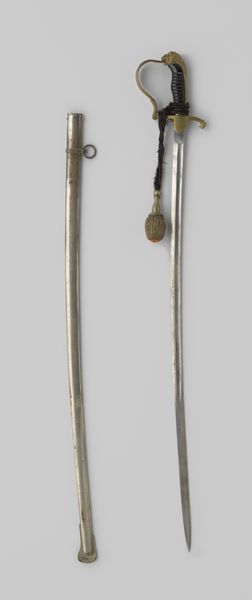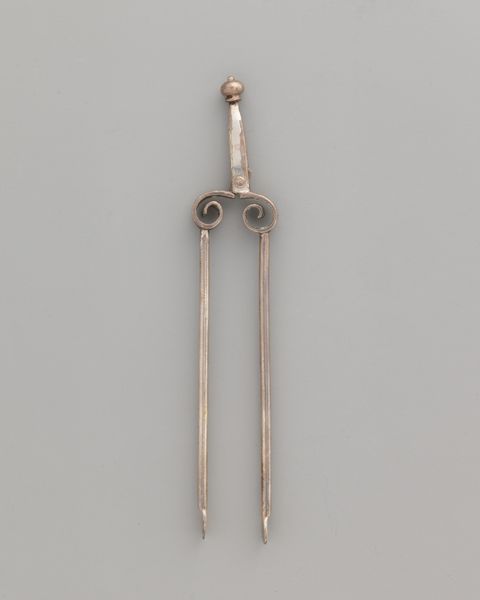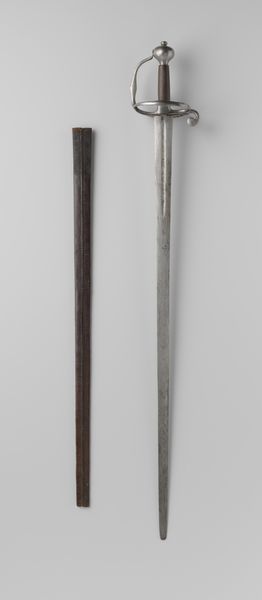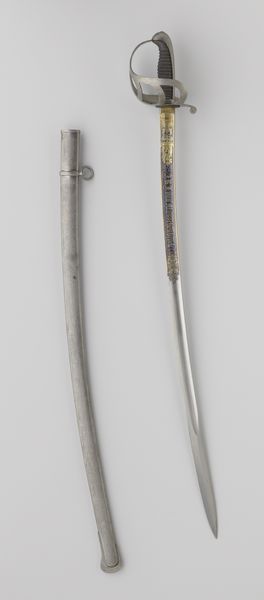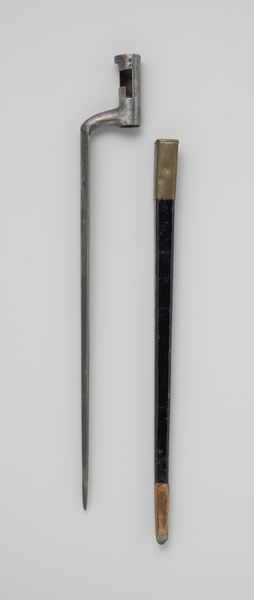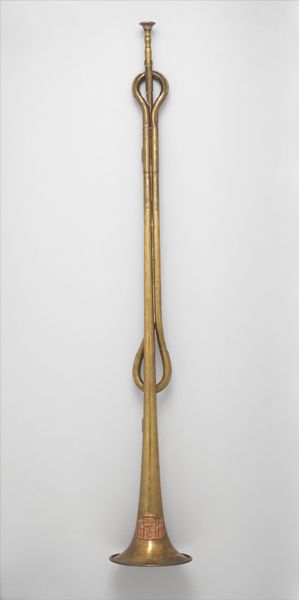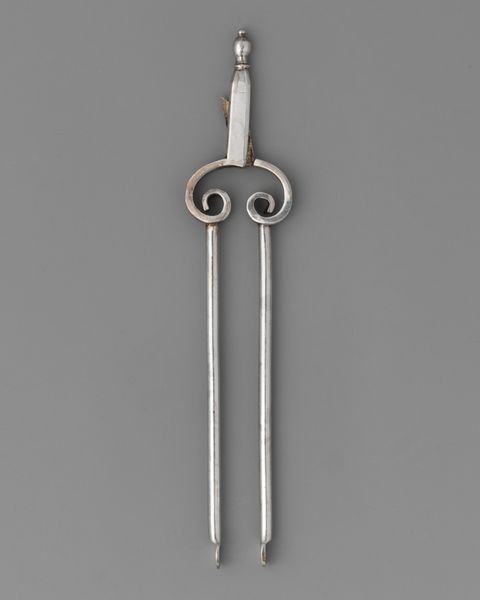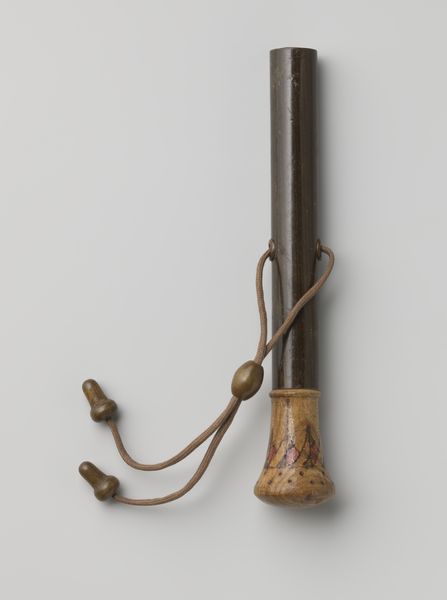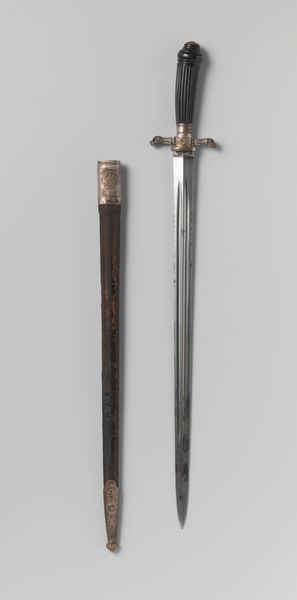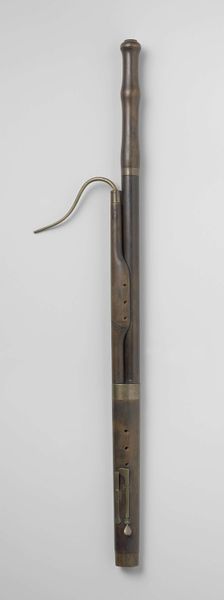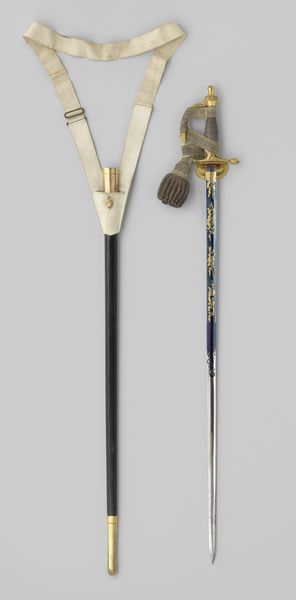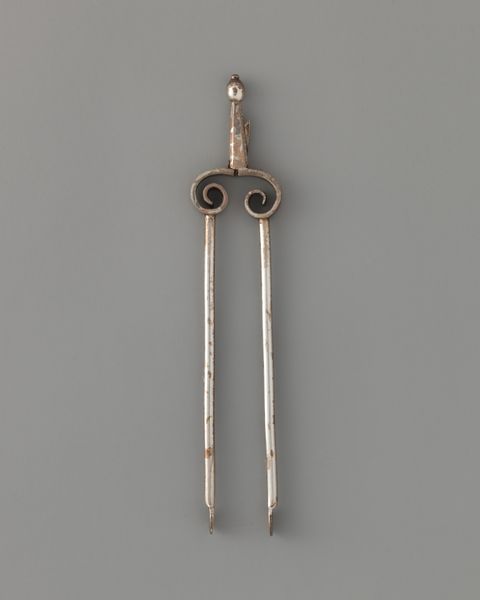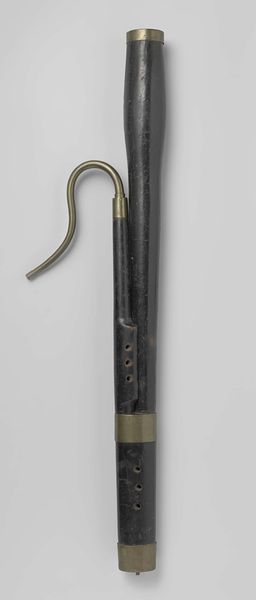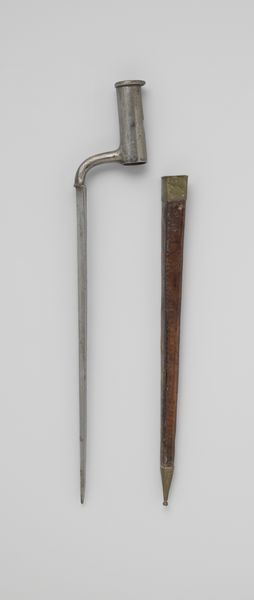
metal
#
metal
#
history-painting
Dimensions: length 101.5 cm, length 97 cm, length 87 cm, length 80 cm, width 2.5 cm, length 15 cm, length 2.3 cm
Copyright: Rijks Museum: Open Domain
This cavalry saber, made by an anonymous artist, likely dates to the era of European colonial expansion. The sword features a long, slender steel blade, a protective hand guard of intricate metalwork, and a decorative tassel attached to its sheath. Swords like this were more than just weapons; they were potent symbols of authority and power, particularly for officers in colonial armies. The steel blade, carefully forged and sharpened, speaks to the advanced metalworking skills of the time. The decorative details, from the filigree of the hand guard to the tassel, reflect the social status and prestige associated with military rank. The labor that went into creating such an object highlights the economic dynamics of colonialism. Raw materials extracted from colonized lands were transformed into tools of domination, underscoring the complex relationship between craft, class, and control. Considering such objects of warfare as material expressions of their time, and the human effort involved in their creation, encourages us to broaden our understanding of art history.
Comments
No comments
Be the first to comment and join the conversation on the ultimate creative platform.
